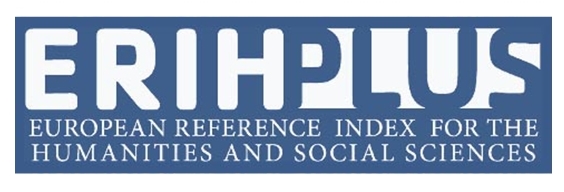The Profanation of Instinct: Stray Mothers in Classic Cinema
The Case of Surcos (Spain, 1951) and The Kidnapper (Argentina, 1958)
DOI:
https://doi.org/10.24215/24690333e054Keywords:
classic cinema, women, motherhood, representationAbstract
From a cultural perspective and with a comparative approach, the text analyzes, within the framework of classic Argentine and Spanish cinemas, representations of motherhood that fail to comply with the hegemonic paradigm that prescribes: unlimited tenderness, intensive care, absolute tolerance and constant dedication. Instead, it is possible to find laziness, inertia, incompetence and reluctance in the care and upbringing of children. The figuration of this «stray» woman-mother of the model is studied in the case of Surcos (Nieves Conde, Spain, 1951) and The Kidnapper (Torre Nilsson, Argentina, 1958).
Downloads
References
Agamben, G. (2005). Profanaciones. Adriana Hidalgo.
Badinter, E. (1981). ¿Existe el amor maternal? Historia del amor maternal. Siglos XVII al XX. Paidós-Pomaire.
Benet, V. (2012). El cine español. Una historia cultural. Paidós.
Nieves Conde, J. A. (2015). Realismo(s), tragedia e ironía / Entrevistado por José Luis Castro de Paz y Julio Pérez Perucha. L’Atalante. Revista de Estudios Cinematográficos, (20), 66-75. https://revistaatalante.com/index.php/atalante/article/view/314
Donath, O. (2016). Madres arrepentidas. Una mirada radical de la maternidad y sus falacias sociales. Penguin Random House.
España, C. (2005). Leopoldo Torre Nilsson. El riesgo de una mirada renovadora. En C. España (Dir.), Cine argentino. Modernidad y vanguardias 1957/1983. Volumen I (pp. 330-355). Fondo Nacional de las Artes.
Guevara, E. (2011). La recepción de El secuestrador de Torre Nilsson desde 1958 hasta hoy. Imagofagia (4). https://www.asaeca.org/imagofagia/index.php/imagofagia/article/view/721
Guido, B. (1984). Productor y director. En C. España Argentina Sono Film, Medio siglo de cine (p. 247). Abril.
Moreno Hernández, A. (2000). Los debates sobre la maternidad. En C. Fernández Montraveta, P. Monreal Requena, A. Moreno Hernández y P. Soto Rodríguez (Coords.), Las representaciones de la maternidad debates teóricos y repercusiones sociales (pp. 1-9). Instituto Universitario de Estudios de la Mujer, Universidad Autónoma de Madrid.
Higueras Flores, R. (2019). Formas de la disidencia. Sinergias entre forma y discurso en los filmes de temática social de Nieves Conde: el caso de Surcos (1951). Fonseca, Journal of Comunication, (19), 149-165. https://doi.org/10.14201/fjc201919149165
Knibiehler, Y. (2001). Historia de las madres y de la maternidad en Occidente. Nueva Visión.
Lozano Estívaliz, M. (2000). Las imágenes de la maternidad. El imaginario social de la maternidad en occidente desde sus orígenes hasta la cultura de masas. Ayuntamiento de Alcalá de Henares y Centro Asesor de la Mujer.
Marcos, M. (2015). Estética e ideología en Surcos. España contemporánea. Revista de literatura y cultura, 24-25(2-1), 205-221.
Martínez, T. E. (1961). La obra de Ayala y Torre Nilsson en las estructuras del cine argentino. Ediciones Culturales Argentinas.
Monterde, J. E. (1995). Continuismo y disidencia (1951-1962). En R. Gubern y otros, Historia del cine español (pp. 239-293). Cátedra.
Roca I. Girona, J. (1996). De la pureza a la maternidad. La construcción del género femenino en la postguerra española. Subdirección General de Museos Estatales.
Rodríguez, J. y Serrano Asenjo, E. (2012). La representación en el cine de la integración de los inmigrantes rurales en las ciudades: el pesimismo de Surcos (1951). Ager. Revista de Estudios sobre Despoblación y Desarrollo Rural, (12), 91-116. https://doi.org/10.4422/ager.2011.03
Sojo Gil, K. (2011). Éxodo rural y emigración al Madrid de los cincuenta. El caso de Surcos (1951), de José Antonio Nieves Conde. Quaderns, (6), 103-113. https://www.cervantesvirtual.com/nd/ark:/59851/bmcnw023
Torre Nilsson, L. (1985). Torre Nilsson por Torre Nilsson (Selección y prólogo de Jorge Miguel Couselo). Fraterna.
Zumalde, I. (1997). Surcos. En J. Pérez Perucha (Ed.), Antología crítica del cine español (pp. 295-296). Cátedra.
Additional Files
Published
How to Cite
Issue
Section
License
Copyright (c) 2024 María Aimaretti

This work is licensed under a Creative Commons Attribution-NonCommercial-ShareAlike 4.0 International License.
Current policy since 2019
The acceptance of an original by the journal implies the non-exclusive transfer of the patrimonial rights of the authors in favor of the publisher, who allows the reuse, after its edition (postprint), under a Creative Commons License Attribution-NonCommercial-ShareAlike 4.0 International.
According to these terms, the material can be shared (copy and redistribute in any medium or format) and adapted (remix, transform and create another work from the material), provided that a) the authorship and the original source of their publication (magazine and URL of the work) are cited, b) is not used for commercial purposes and c) the same terms of the license are maintained.
The assignment of non-exclusive rights implies that after postprint in Con X authors may publish their work in any language, media and format; in that case, it is requested that they signal that the material was originally published by this journal.
Assignment also entails the authors’ authorization for the work to be collected by SEDICI, the institutional repository of the Universidad Nacional de La Plata, and for it to be indexed in the databases that the publisher thinks appropriate for enhancing the visibility of the published work and its authors.
In addition, the journal encourages authors to submit their works to other institutional and thematic repositories after their publication in Con X, under the assumption that offering society unrestricted access to scientific and academic production contributes to a greater exchange in global knowledge.









.jpg)

.png)



.png)





















